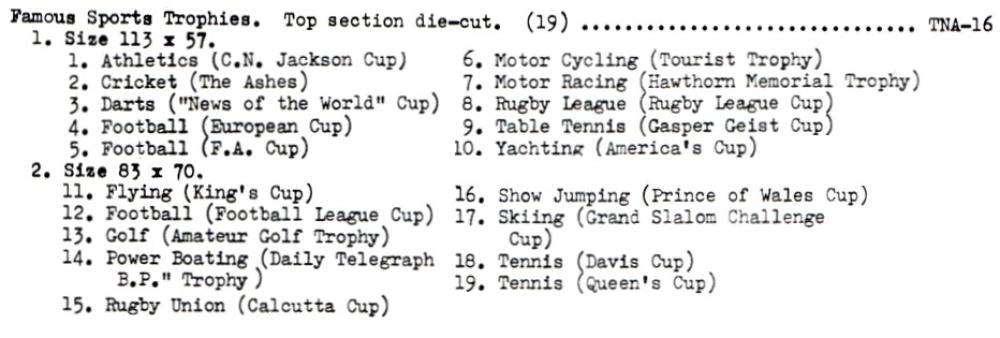
The reverse of this card tells us that this is the Gasper Geist Cup, for women’s singles. And this is named after an actual person - Dr. Gaspar Geist the President of the Hungarian Table Tennis Association. He donated it, specifically for the Women`s Singles World Championship, in 1931, which was the fifth World Championships, and was in that year taking place in Budapest. However it was not the first Women's Singles event in the World Championships, that had taken place in 1926.
Hungary used to be a major force in table tennis - having won the Men`s Team event twelve times, second in the all time winners list to China, who has won it fifteen times. The first ever national championships were also held in Hungary, in 1897.
The card also says that “The Ping Pong Association, which was formed in 1902 became, in due course, the English Table Tennis Association”. I thought that this was being slightly cheeky to call it The Ping Pong Association, so I did a bit of research, and discovered that there was indeed an Association by that name, formed in December 1901. However, and this is really curious, there was also The Table Tennis Association, formed in December 1901, less than a week before.
What happened was that in 1901, Jaques of London had produced a game called Ping Pong; a game, but not for children. This was designed as a little after dinner entertainment, the idea being that once the servants had cleared away the dinner things the host would fix the net to the edges of the same table that his guests had just eaten off, roughly in the middle lengthwise, and have a few rounds. This was not the first game of its type; that was introduced in the 1890s, called "Gossima", and, intriguingly, was also produced by Jaques of London. Many games collectors and researchers say that this was based on a game played in India by British Officers, and that possibly someone in the Jaques family had seen or played it themselves.
Now the Ping Pong Association had all gone by 1905, leaving just the English Table Tennis Association, and it seems natural that the members of the first graduated to the second, rather than merging, as our card seems to suggest. The game continued, and it spread into Europe, which is where prominent players and officials got together and started the Fédération Internationale de Tennis de Table (or International Table Tennis Federation) in 1926, those being from Austria, Czechoslovakia, England, Germany, Hungary, India, Sweden, and Wales. Their first championships were held in that same year, but not in Europe, they were held in London.
This set does not appear in our British Trade Index until part IV, where it is described as :
Famous Sports Trophies. Shaped, various sizes. (20)
19 subjects as listed under Set TNA-16 in III. Twentieth subject is `Football` (The World Cup) … MJZ-21
Looking back at part III of the British Trade Index this TNA-16 turns out to be a Tonibell issue, also with ice cream. That write up is much larger, and it is scanned in below :
Now this appears to suggest that Tonibell never issued the last card of the World Cup, so is that true? And if so, why not?
The clue to that seems to come in our updated British Trade Index, for the Mister Softee version is not there at all, and the listing under Tonibell reads :
FAMOUS SPORTS TROPHIES. 1970. Top section die-cut. Unnd. (19). See HT-87
1. 113 x 57 (10) 2. 83 x 70 (9).
This suggests the Mister Softee issue came after 1970. And a look in my Murrays Catalogue of Values shows it was issued quite a bit later, in 1975. It is also, confusingly, catalogued under a different title, of “Sports Cups”. However, in the same book, the Tonibell version is dated 1976, which cannot be right.
There are two trains of thought here. One is that the Tonibell was issued first, in a year amidst World Cups, and the Mister Softee was issued later, about the time of a World Cup. This is plausible, but would mean that the final card was redrawn specially, which can only be discovered by comparing the artwork. The other theory is that it was the Mister Softee that was issued first, in a World Cup year, and then the set was reprinted later, by Tonibell, without that card because it was not a World Cup year. This seems implausible, given the popularity of football, though there are two other trophies in the set, the F.A. Cup and the European Cup, and maybe they thought three was one too many?

